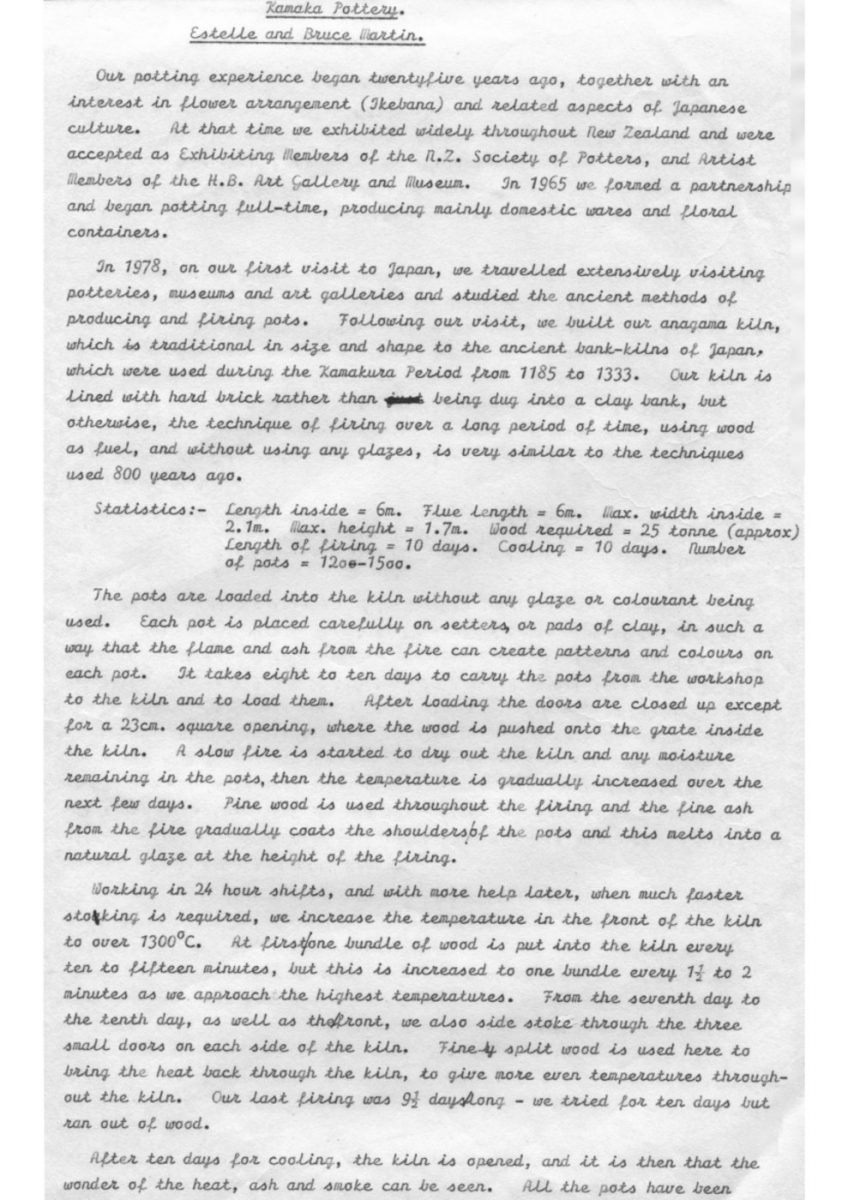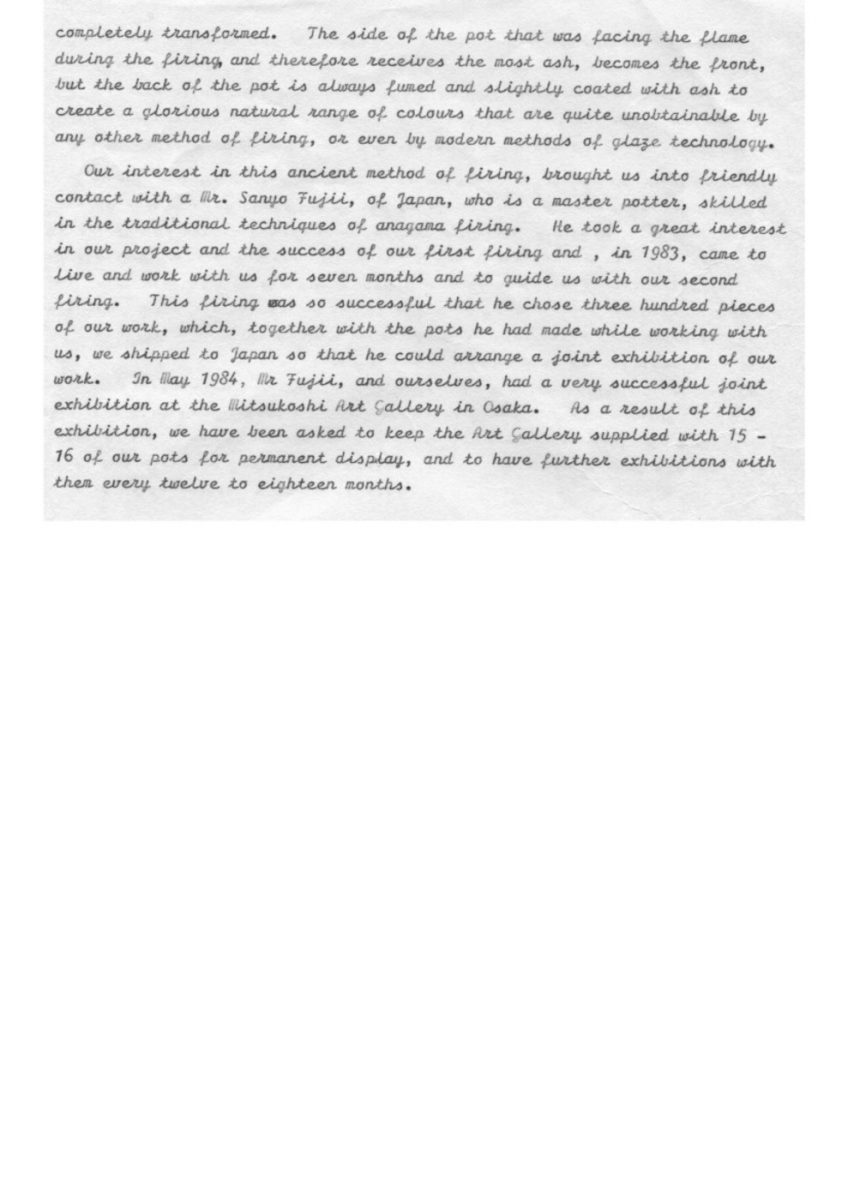Kamaka Pottery.
Estelle and Bruce Martin.
Our potting experience began twentyfive years ago, together with an interest in flower arrangement (Ikebana) and related aspects of Japanese culture. At that time we exhibited widely throughout New Zealand and were accepted as Exhibiting members of the N.Z. Society of Potters, and Artist members of the H.B. Art Gallery and museum. In 1965 we formed a partnership and began potting full-time, producing mainly domestic wares and floral containers.
In 1978, on our first visit to Japan, we travelled extensively visiting potteries, museums and art galleries and studied the ancient methods of producing and firing pots. Following our visit, we built our anagama kiln, which 46 traditional in size and shape to the ancient bank-kilns of Japan, which were used during the Kamakura Period from 1185 to 1333. Our kiln is lined with hard brick rather than being dug into a clay bank, but otherwise, the technique of firing over a long period of time, using wood a fuel, and without using any glazes, do very similar to the techniques used 800 years ago.
Statistics:- Length inside = 6m. Flue Length = 6m. Max. width inside = 2.1m. Max. height = 1.7m. Wood required = 25 tonne (approx) Length of firing = 10 days. Cooling = 10 days. Nunber of pots = 1206-1500.
The pots are loaded into the kiln without any glaze or colourant being used. Each pot is placed carefully on setters or pads of clay, in such a way that the flame and ash from the fire can create patterns and colours on each pot. It takes eight to ten days to carry the pots from the workshop to the kiln and to load them. After loading the doors are closed up except for a 23cm. square opening, where the wood is pushed onto the grate inside the kiln. A slow fire is started to dry out the kiln and any moisture remaining in the pots, then the temperature is gradually increased over the next few days. Pine wood is used throughout the firing and the fine ash from the fire gradually coats the shoulders of the pots and this melts into a natural glaze at the height of the firing.
Working in 24 hour shifts, and with more help later, when much faster stoking is required, we increase the temperature in the front of the kiln to over 1300°C. At first one bundle of wood is put into the kiln every ten to fifteen minutes, but this is increased to one bundle every 1½ to 2 minutes as we approach the highest temperatures. From the seventh day to the tenth day, as well as the front, we also side stoke through the three small doors on each side of the kiln. Finely split wood is used here to bring the heat back through the kiln, to give more even temperatures throughout the kiln. Our 1st firing was 9½ days long – we tried for ten days but ran out of wood.
After ten days for cooling, the kiln is opened, and it is then that the wonder of the heat, ash and smoke can be seen. All the pots have been













Do you know something about this record?
Please note we cannot verify the accuracy of any information posted by the community.